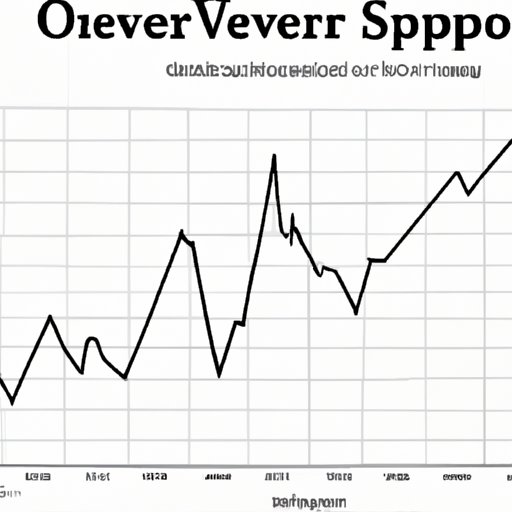Introduction
The Great Depression was one of the most devastating economic crises in history. It began in 1929 and lasted for nearly a decade, affecting countries around the world and causing widespread poverty, unemployment, and social unrest. But what caused the Great Depression? One of the primary contributing factors was overproduction. Overproduction is an economic issue that occurs when businesses and factories produce more goods than can be sold or consumed. This can lead to an imbalance in the economy and can have long-lasting effects.
Analyzing the Causes of Overproduction in the 1920s
In the 1920s, there were several factors that contributed to overproduction. One of the primary drivers of overproduction was the rise of consumerism. During this period, Americans were buying more and more goods, creating a demand for products that businesses were eager to meet. This led to an increase in production, as businesses sought to satisfy the growing demand for their products.
At the same time, advances in technology meant that businesses could produce more goods with less effort. This increased productivity, but it also meant that more goods were being produced than could be sold. As a result, businesses found themselves with an oversupply of goods.
The third factor that contributed to overproduction was speculation in the stock market. During this period, investors were taking advantage of low interest rates to buy stocks. This created an artificial demand for stocks, leading to an overvaluation of stocks and an increase in speculative investments.

Examining How Overproduction Contributed to Economic Instability
Overproduction had several negative effects on the economy. First, it led to an oversupply of goods. With more goods being produced than could be sold, businesses were unable to sell all of their products, resulting in losses for the companies. This led to a decrease in demand for goods, as consumers were unwilling or unable to purchase them.
Second, overproduction resulted in deflationary pressures. As businesses were unable to sell their products, they cut back on production, resulting in a decrease in prices. This further decreased demand, as consumers had less purchasing power. Finally, overproduction caused a decrease in wages, as businesses had to reduce costs in order to remain profitable.

Exploring the Impact of Overproduction on the Stock Market Crash
Overproduction also played a role in the stock market crash of 1929. The boom in the stock market was fueled by speculation, as investors were buying stocks at an inflated price. This created an artificial demand for stocks, leading to an overvaluation of stocks. At the same time, investors were using margin buying, which allowed them to purchase stocks with borrowed money. When the stock market crashed, many investors were unable to pay back their loans, resulting in a collapse of the banking system.

Evaluating the Role of Tariffs and Trade Restrictions in Creating Overproduction
Overproduction was also exacerbated by tariffs and trade restrictions. In 1930, the US Congress passed the Smoot-Hawley Tariff Act, which imposed high tariffs on imports. This act led to a decline in international trade, as other countries retaliated with their own tariffs. This reduced the demand for goods from the US, further exacerbating the problem of overproduction.

Discussing the Effects of Overproduction on Prices and Wages
The effects of overproduction were felt across the economy. As businesses were unable to sell their products, they cut back on production, resulting in a decrease in prices. This, in turn, led to a decrease in wages, as businesses had to reduce costs in order to remain profitable. This further decreased purchasing power, as consumers had less money to spend on goods.
Assessing How Overproduction Led to Bank Failures and Unemployment
The effects of overproduction were also felt in the banking system. The collapse of the stock market led to a banking crisis, as investors were unable to pay back their loans. This caused a wave of bank failures, resulting in a loss of jobs and an increase in poverty. The resulting unemployment further reduced purchasing power, leading to a downward spiral in the economy.
Investigating the Relationship Between Overproduction and the Great Depression
The relationship between overproduction and the Great Depression is clear. The oversupply of goods created an aggregate demand shock, which led to a decrease in prices and wages, reducing purchasing power. This, combined with the banking crisis, caused a global economic depression that lasted for nearly a decade. The long-term effects of overproduction are still felt today, as the legacy of the Great Depression continues to shape the global economy.
Conclusion
Overproduction was one of the primary causes of the Great Depression. It led to an oversupply of goods, deflationary pressures, and a decrease in wages. This, combined with the banking crisis and international trade restrictions, caused a global economic depression that lasted for nearly a decade. The legacy of the Great Depression is still felt today, and it serves as a reminder of the dangers of overproduction.
(Note: Is this article not meeting your expectations? Do you have knowledge or insights to share? Unlock new opportunities and expand your reach by joining our authors team. Click Registration to join us and share your expertise with our readers.)
